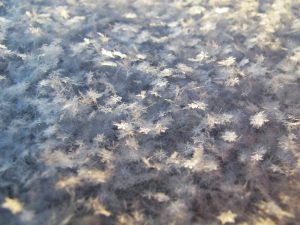Lab-Grown Silk: Can Science Outperform Silkworms?

The history of silk production can be traced back to ancient China, where the delicate fabric was considered a luxury reserved for the ruling class. For centuries, silk was harvested by silkworms, a process that involved the laborious task of feeding and caring for the tiny insects as they spun their delicate cocoons. But now, with advancements in technology and science, researchers have developed a new method for producing silk – lab-grown silk. This raises the question: Can science outperform silkworms in the production of this highly coveted material?
The Rise of Lab-Grown Silk
While traditional methods for producing silk have remained relatively unchanged for centuries, lab-grown silk is a relatively new development. In fact, the first synthetic silk was created in the early 20th century, but it was not until recently that significant progress has been made in perfecting the process.
Lab-grown silk, also known as synthetic silk or biotech silk, is produced by extracting silk proteins from spiders, silkworms, or other insects and then growing these proteins in a lab setting. The resulting silk is chemically identical to natural silk, but it can be produced in larger quantities and with greater control over its properties. This makes lab-grown silk an attractive alternative for industries that rely on the material, such as fashion and medical research.
The Advantages of Lab-Grown Silk
Greater Control Over Production
Traditional silk production relies on the natural lifespan and behaviors of silkworms. This means that the supply of silk is limited by the availability and health of the insects. In contrast, lab-grown silk can be produced in a controlled environment with a constant and reliable supply. This also means that the quality of the silk can be more consistent, making it easier for manufacturers to meet the demands of their customers.
Reduced Environmental Impact
The process of harvesting silk from silkworms involves the killing of the insects once their cocoons are formed. This raises ethical concerns for many people, especially with the increasing awareness of animal rights and the sustainability of production methods. Lab-grown silk avoids this issue by using silk proteins extracted from insects without harming them. This process also has a significantly lower environmental impact, requiring less land and energy compared to traditional silk production.
The Future of Silk Production
While lab-grown silk has many advantages, it is not without its challenges. The cost of producing lab-grown silk is still relatively high compared to traditional methods, making it less accessible for small-scale producers. Additionally, there are some concerns about the long-term environmental impact of large-scale silk protein production in labs.
However, these challenges are being addressed by ongoing research and advancements in technology. The cost of producing lab-grown silk is expected to decrease as the process becomes more streamlined and efficient. And as sustainability becomes a top priority for manufacturers and consumers alike, the environmentally friendly nature of lab-grown silk is sure to be a major selling point.
Conclusion
Lab-grown silk has the potential to revolutionize the silk industry. With its numerous advantages, including greater control over production and reduced environmental impact, it is a promising alternative to traditional silk production methods. However, further research and development are needed to make the process more affordable and sustainable. Only time will tell if science can truly outperform silkworms in the production of this luxurious material.
The history of silk production can be traced back to ancient China, where the delicate fabric was considered a luxury reserved for the ruling class. For centuries, silk was harvested by silkworms, a process that involved the laborious task of feeding and caring for the tiny insects as they spun their delicate cocoons. But now, with advancements in technology and science, researchers have developed a new method for producing silk – lab-grown silk. This raises the question: Can science outperform silkworms in the production of this highly coveted material?
The Rise of Lab-Grown Silk
While traditional methods for producing silk have remained relatively unchanged for centuries, lab-grown silk is a relatively new development. In fact, the first synthetic silk was created in the early 20th century, but it was not until recently that significant progress has been made in perfecting the process.
Lab-grown silk, also known as synthetic silk or biotech silk, is produced by extracting silk proteins from spiders, silkworms, or other insects and then growing these proteins in a lab setting. The resulting silk is chemically identical to natural silk, but it can be produced in larger quantities and with greater control over its properties. This makes lab-grown silk an attractive alternative for industries that rely on the material, such as fashion and medical research.
The Advantages of Lab-Grown Silk
Greater Control Over Production
Traditional silk production relies on the natural lifespan and behaviors of silkworms. This means that the supply of silk is limited by the availability and health of the insects. In contrast, lab-grown silk can be produced in a controlled environment with a constant and reliable supply. This also means that the quality of the silk can be more consistent, making it easier for manufacturers to meet the demands of their customers.
Reduced Environmental Impact
The process of harvesting silk from silkworms involves the killing of the insects once their cocoons are formed. This raises ethical concerns for many people, especially with the increasing awareness of animal rights and the sustainability of production methods. Lab-grown silk avoids this issue by using silk proteins extracted from insects without harming them. This process also has a significantly lower environmental impact, requiring less land and energy compared to traditional silk production.
The Future of Silk Production
While lab-grown silk has many advantages, it is not without its challenges. The cost of producing lab-grown silk is still relatively high compared to traditional methods, making it less accessible for small-scale producers. Additionally, there are some concerns about the long-term environmental impact of large-scale silk protein production in labs.
However, these challenges are being addressed by ongoing research and advancements in technology. The cost of producing lab-grown silk is expected to decrease as the process becomes more streamlined and efficient. And as sustainability becomes a top priority for manufacturers and consumers alike, the environmentally friendly nature of lab-grown silk is sure to be a major selling point.
Conclusion
Lab-grown silk has the potential to revolutionize the silk industry. With its numerous advantages, including greater control over production and reduced environmental impact, it is a promising alternative to traditional silk production methods. However, further research and development are needed to make the process more affordable and sustainable. Only time will tell if science can truly outperform silkworms in the production of this luxurious material.
-->










